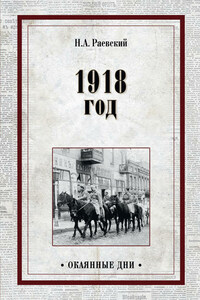Nearly forty years have passed since Secretariat swept to three record-smashing victories in the Triple Crown—an unprecedented tour de force that confirmed him as the most capable and charismatic racehorse in the modern annals of the turf—and today his legend as a Thoroughbred, with all that word implies, remains as vibrant and secure as ever.
Horsemen have always been loath to compare horses from different eras, seeing any attempt to do so as a diverting but futile exercise. Could Secretariat have beaten Man o’ War or Citation? Could either of them have whipped Swaps, Seattle Slew, or Native Dancer? Or run down the immortal Count Fleet or Dr. Fager? Or out-gutted Seabiscuit at his match-race best? To all such facile questions, of course, there are only facile answers. The only thing that is really certain, after the passage of two decades since his death at Claiborne Farm, is that Secretariat continues to be viewed as the modern standard against which all members of his tribe are judged.
“His only point of reference is himself,” turfwriter Charles Hatton wrote after witnessing the colt’s thirty-one-length victory in the Belmont Stakes.
If anything, time has only enriched and embellished his name. On ESPN’s acclaimed TV series portraying the fifty greatest athletes of the twentieth century, he was ranked thirty-fifth, the only quadruped honored in the series. In another end-of-the-century event celebrating the decade of the 1970s, the U.S. Postal Service put his comely mug on a thirty-three-cent postage stamp. A three-quarter-sized bronze statue of Secretariat, commissioned by philanthropist Paul Mellon and depicting the horse in full flight, his head and forelegs thrust forward, decorates the middle of the walking ring at Belmont Park—a symbolic centerpiece forever representing the best of the sport and the breed. And a full-sized statue in bronze, with jockey Ron Turcotte aboard and groom Ed Sweat trying to restrain the thoroughbred, was unveiled in 2006 at the Kentucky Horse Park in Lexington—just down the road from Claiborne Farm, where Secretariat died at age nineteen, on October 4, 1989, and where a loyal network of old friends, many of them anonymous, have kept his grave in flowers through the years, a symbolic reminder of the hold he has had on the memories of those who saw him run almost four decades before.
It was there at Claiborne, one early afternoon in 2009, that actress Diane Lane visited the storied horse cemetery behind the office, its rows of gray headstones engraved with names long celebrated in the richer histories of the American turf: Bold Ruler … Round Table … Gallant Fox … Damascus … Buckpasser … Mr. Prospector … and Secretariat. As she left through the cemetery gate, a gray-haired gent in a black windbreaker stopped behind her and bent over Secretariat’s grave, plucking a single red rose from a vase of flowers tipped against the headstone.
“Here,” the old gent said, handing the rose to Lane. “The horse asked me to give this to you. Wanted you to have it.”
Diane smiled, almost purring. “Thank you,” she said. Lifting the stem in both hands, she touched the rose like an artist’s brush to her exquisite face. “I will treasure this,” she said.
At the moment, the acclaimed actress was at the bustling center of the richest, most extravagant tribute ever paid to the life and legend of Secretariat—a full-length feature film starring Diane as Penny Chenery Tweedy, the woman who drove Secretariat’s career in place of her dying father (played by Scott Glenn), and the brilliant John Malkovich as trainer Lucien Laurin, the man with whom Penny shared the glories, the tumults, and the pressures that attended the leading of this magnificent chestnut, recently syndicated for $6 million, through the turbulent waters of the Triple Crown. I was down there, too, a hired hand observing the making of the film. Walt Disney Pictures, with Mayhem Pictures producing, had just begun shooting it at a rainy churchyard cemetery in rural Lexington, where the scene was the burial of Chenery’s mother, Helen Bates Chenery, and where Diane perfectly evoked Penny’s patrician reserve and grieving beauty beneath panoplies of black umbrellas.








